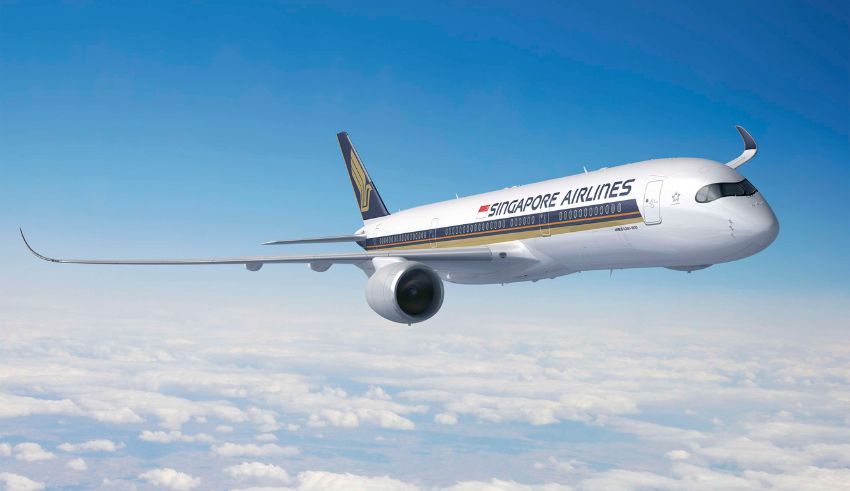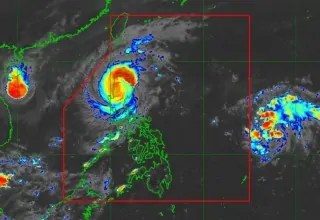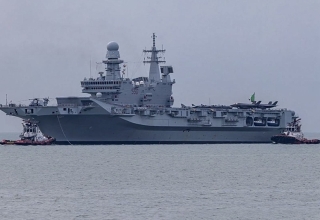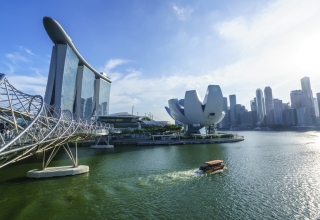
Ten hours into the London to Singapore flight SQ321 had been comparatively smooth until the aircraft encountered severe turbulence. ‘Terrifying,’ according to passengers, the Singapore Airlines aircraft abruptly descended 7,000 feet in just six minutes, causing mayhem and terror among all on board. Add to the terror and uncertainty was the violent hurling of anyone not wearing a seatbelt from their seats by the abrupt drop.
Tragic Repercussions
Seven of the at least 71 persons who were injured by the extreme turbulence were in critical condition. Tragically, the event claimed the life of one passenger, British grandpa Geoffrey Ralph Kitchen, 73. Thai officials believe Kitchen, who had a pre-existing heart disease, most certainly had a heart attack during the terrifying turbulence. His death threw a dark cloud over the already horrific incident and brought to light the possible risks associated with severe in-flight turbulence.
The 10 Busiest Airline Routes
Although turbulence is a normal feature of flying, some routes are renowned for being very severe. Based to Turbli data, these are the ten most turbulent flight routes in the world:
- The difficult weather in Santiago (SCL) – Santa Cruz (VVI) route in South America is well-known. The Andes Mountains add a great deal to the turbulence; tropical storms and air currents regularly cause aircraft disruptions.
- ALA Almaty – FRU Bishkek: Because of the high country and erratic winds of Central Asia, this trip is especially rough. Air currents produced by the Tien Shan mountains are a key contributing reason to bumpy flights.
- Lanzhou (LHW) – Chengdu (CTU): Because the earth heats unevenly, the inner parts of China see a great deal of thermal instability. Due in large part to rising warm air, this route is notorious for its choppy rides.
- Flights over Japan’s mountainous regions experience mechanical turbulence on Centrair (NGO) – Sendai (SDJ). The path is difficult because of the complicated landscape and regular weather changes, which also upset air currents.
- Milan (MXP) – Geneva (GVA): There is a reputation for considerable turbulence on flights over the Alps. Particularly at seasonal shifts, the hilly topography generates air currents that can jolt aircraft violently.
- Another choppy route inside China, Lanzhou (LHW) – Xianyang (XIY), has comparable problems with thermal turbulence. The varied topography and climatic conditions lead to regular air disturbances.
- Osaka (KIX) – Sendai (SDJ): The way that land and sea weather patterns combine causes turbulence in Japan’s coastal locations. Flying this route is therefore frequently rough.
- Chinese route Xianyang (XIY) – Chengdu (CTU) is likewise erratic, with regular air disturbances brought on by the country’s varied topography.
- Trans-Asiatic Flights: Because of the great distances and different weather patterns, routes linking Asia and Europe sometimes run into difficult regions. Significant turbulence results from these flights’ need to pass through several atmospheric environments.
- Trans-European Flights: During seasonal shifts, European skies can be especially erratic. Multiple weather systems that can cause difficult air must be dealt with by flights across the continent.
Recognizing and Getting Ready for Turbulence
Better preparation and passenger safety are made possible by airlines knowing the reasons of turbulence and determining the most difficult routes. Among the many causes of turbulence are variations in air pressure, geography, and weather patterns. Because it can happen suddenly and is undetectable, clear-air turbulence—which happens at high altitudes in clear weather—is especially hazardous.
Technologies and Safety Procedures
Technological developments have made it far easier for pilots to identify and negotiate choppy terrain. Pilots of modern airplanes can take evasive action as necessary because of the advanced weather radar systems installed on them, which can detect turbulence ahead. Furthermore, updates about turbulent conditions are made possible via real-time data exchange between aircraft and air traffic control.
Protocols for Passenger Safety
When things are choppy, passenger safety procedures are essential. When seated, airlines stress the need of always wearing seatbelts because turbulence might happen at any time. More frequent warnings and improved safety briefings help make sure passengers are ready for unexpected changes in flying conditions.
Grieving a Loss and Aiming for Clearer Air
We are struck, as we mourn the loss of Geoffrey Ralph Kitchen on Flight SQ321, by the need of further advancements in aviation safety. Turbulence is unpredictable, as this tragedy emphasizes, and strict safety procedures are essential. Airlines are always trying to enhance the traveler experience; this includes everything from more sophisticated turbulence detection systems to better seatbelt reminders.
Seeking Safer Skies
The quest of safer skies is still critical in a world that is always linked. By means of improved knowledge and readiness, airlines seek to reduce the hazards connected to flying. This entails continuous study of turbulence patterns, better aircraft design to resist turbulent pressures, and better crew and pilot training to deal with harsh situations.
Verdict
The terrifying event on Flight SQ321 is a sobering lesson in the unpredictability of aviation and the need of strict safety precautions. The aviation industry works to make sure that passengers may fly with more confidence and security by determining and comprehending the busiest flight routes and by always improving technology and safety procedures. We are still dedicated to make the sky safer for everyone as we remember the departed.





















